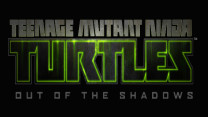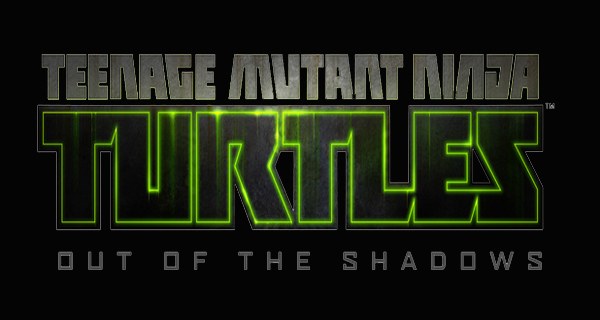Teenage Mutant Ninja Turtles: Out of the Shadows is the best TMNT game there has ever been. If that sounds like faint praise: it is. Even though the game pushes the boundaries of what to expect from a low-budget, licensed beat ’em up, by working the strengths of the franchise (do have a peek at these guys to know about how to successfully set up one) into fairly deep gameplay, it is hamstrung by a patently rushed development cycle (take a bow Activision and Xbox ‘Summer of Arcade’).
Previous game adaptations, usually by Konami, tended to be heavy on licence but light on gameplay, favouring an arcade-style coin-eating design. What was once enchanting combat is nowadays simplistic and underwhelming; fine for a trip down memory lane but not enough to sustain a contemporary venture. One needs look no further than Turtles In Time Re-Shelled from a few years back for a perfect example of mutton dressed as lamb.
Aware of these shortcomings, Red Fly Studios clearly set out to give Out of the Shadows a very modern feel, incorporating tricks from other contemporary beat ’em ups and action games while establishing its own identity. Chief among these inspirations is the Batman: Arkham series from Rocksteady Studios (no relation to Bebop); a shadow from which it cannot escape despite any obvious but unfair comparisons.
While based on the Nickelodeon licence, which saw a new TV series launch last year, the art style and gameplay are tailored towards an older audience, particularly those in their late twenties and early thirties, who remember the original cartoon and film (or even the comics) but with the odd concessions to younger players in both design and licence. Everything has a grittier approach closer to the first film, utilising shadows for a pseudo-noir feel, and features more realistic models (for mutant ninja turtles, anyway) which hew close to the earlier comic incarnations as drawn by creators Eastman & Laird or Jim Lawson while compromising with its Nickelodeon remit. This means detailed reptilian textures, scrawny necks and Popeye-style chunky hands and feet that are at once familiar and strangely odd; each turtle also sports an individual look not just limited to their headband colour and weapon. Personally, I am a fan of the overall design, particularly once it’s in motion, but I can see why others may find it off-putting.
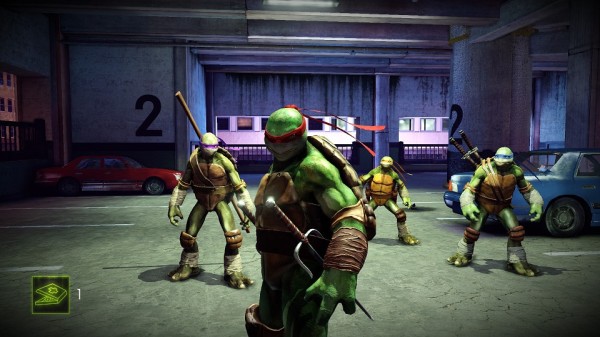
Like many TMNT games before, the core of Out of the Shadows adheres to the old beat ’em up template of progressing through various environments until you have soundly thrashed everyone who dares oppose you. The big difference this time being that it takes place in fully 3D, traversable environments with more modern production values, albeit on a lower budget. The story is fairly simplistic and told mostly through basic cartoon images accompanied by voiceover. It’s passable, merely a means to send the turtles across a four chapter campaign; the last of which tends to drag a little. In the course of the 5-6 hours it takes to complete you’ll brawl through back alleys, rooftops, sewers and factories to name but a few; with the game occasionally able to convey a decent sense of atmosphere. Players are free to roam a little off the beaten path in order to find collectibles and power-ups or try and get the drop on a group of enemies to land a few stealth KOs before fighting breaks out. Unfortunately, while full of potential, the actual exploration of environments never feels as fluid as it could and is, at times, a little directionless. Assassin’s Creed this is not.
Combat apes the Freeflow System of the Arkham games, with standard attacks, evades and counters, but adds a little more depth and variety. Realising that the strength of the TMNT licence is in its teaming of the titular four, a great deal of effort has been put into delivering fun interactions between them as well as giving each their own distinctive style. Donatello is the slowest but has good range and crowd control, while mixing in kung fu-inspired stances; Raphael is a close-range brute who combines muay thai with wrestling-style throws; Michelangelo zips around with a capoeira flavour; and Leonardo is a balance of speed, strength and resilience who moves with great élan (I just wanted to use that word, but it’s true). Each has their own strengths and passive team buffs, supported by individual upgrades in a variety of categories. Impressively, all are present throughout the main campaign mode (with fairly competent AI) and selectable on the fly, even in the midst of combat, while certain special attacks, dependent on positioning, see them working together to take down enemies. Usually performed in pairs, there are a many different moves, from recreating the bowling ball attack seen in the first film to that old playground gag where one turtle crouches behind an enemy while the other pushes them over (yes, really). If you’re lucky enough, you’ll get to witness all four turtles surround an enemy and crush them between their shells. Even if you’re playing alone, you’ll find it simple to execute these combinations and will even occasionally find the AI setting them up for you.
The combat system, when allowed to reach its full potential, is quite brilliant, yet will not be for everyone. For starters, it is certainly idiosyncratic, which can be mildly off-putting at first. Where the Arkham games allowed you to quite happily whale on foes until a counter-attack or evade was necessary, this requires you to anticipate your enemies’ moves a bit more. Get too carried away in your attacks and your counter may come too late, either failing or resulting in a block, or possibly even a glancing blow. On the surface, moves seem clunky (particularly for the slower turtles like Donatello and Raphael) but they merely require deliberate, methodical inputs to get the most out of the system. It is the rare case where paying attention to loading screen tips – pitched as Splinter’s Words of Wisdom – really is crucial. The game is generous enough with healing items that button-mashing will get you so far, yet you’ll never get the most out of the game and your enjoyment will suffer for it. It’s clearly an approach that straddles the line of catering to younger players while providing enough substance for older fans of the franchise.
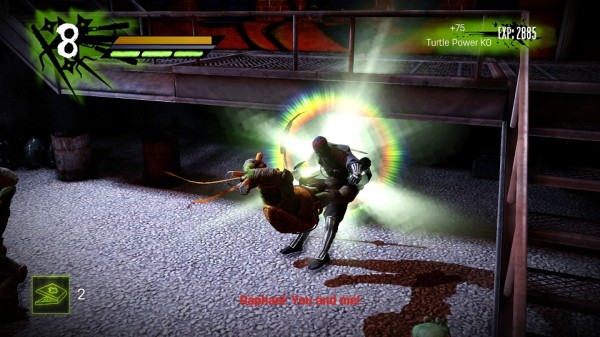
Those looking to go deeper will find all manner of attack options from dashes, juggles, rising attacks and even the good old dropkicks along with special counter attacks, finishers and team-flavoured variations on all of these; all of which can be practised and fine-tuned in the training mode. The amount of moves on display is staggering and all captured with neat animations that are unique to each turtle. A sprinting kick from Don sees him use his bo to vault into the enemy whereas Raphael leaps forward, knees first. Even the evades are completely different from one turtle to the next. It wouldn’t be complete without the occasional bit of slow-mo combined with dramatic camera angles, and it’s the special attacks that benefit the most from these.
When everything comes together, the combat is a joy to behold. Hits feel hefty, combos can be strung together in a mixture of moves, and the animations give proceedings a great deal of spectacle. Unfortunately, things don’t always run so smoothly, courtesy of a few design missteps and technical flaws. While it’s true that combat inputs demand a considered approach, there’s no escaping how sluggish it can feel overall, particularly at the beginning when shy of a few critical upgrades; a case of too much turtle and not enough ninja. As with most 3D combat games, you’ll also spend a bit of time fighting with the camera. The four turtles combined with a deluge of enemies and all the flashy attack effects and counter warnings (of which there are four different colours for standard, special, multi-part and unblockable) can lead to things becoming a little too crowded and indistinguishable. Certain enemies will dive-in or fire from off-screen and combat lacks the refined and reliable enemy-tracking of the Arkham games. Requiring players to identify the high-priority threats is all well and good, but they need a means to reach them quickly without breaking combos, particularly in the tougher, solo modes. Throw in enemy fire, a fiddly inventory system and an unnecessary block-stamina system, and it can become a little overwhelming. In a quest to deliver a combat system that is appreciably complex, Red Fly have overstepped slightly into convoluted.
Additionally, there are instances where the design feels a little counter-intuitive and doesn’t really pay off until long past an initial playthrough. Kicks are good at breaking an enemy block and knocking them to the floor, but when even blocked attacks increase the combo counter, thus enabling stronger finishers and team attacks, and floored enemies are much trickier to combo from, there’s no real incentive to work them into your combo. In fact, it’s not until you’ve unlocked ground takedowns and techniques like stun finishers, that you’ll find faster, more efficient ways to finish off enemies; an approach more suited to the additional challenge and survival modes. Modes which will only attract players not already turned off by the combat’s initial fussiness.
The game boasts a lot of content for its price tag. Besides the campaign, there is a seven-level arcade mode that transposes the story and modern mechanics of the campaign into the side-scrolling setting of yore and supports local co-op for up to four players; a challenge mode for individual turtles to take on four waves of enemies; a survival mode that puts the whole team against twenty waves of everything the game can throw at you; and even a dojo for trying out those dozens of moves you unlock. Those in search of a real challenge will find it among these extras, and it’s the arcade mode where the combat gets to shine in a new way, as the camera troubles almost completely disappear and the environment allows for neat tricks instead of obscuring the action. The boss battles don’t translate very well but the rest of it, along with the faults of the other mode, almost makes you wish the whole game were built around this.
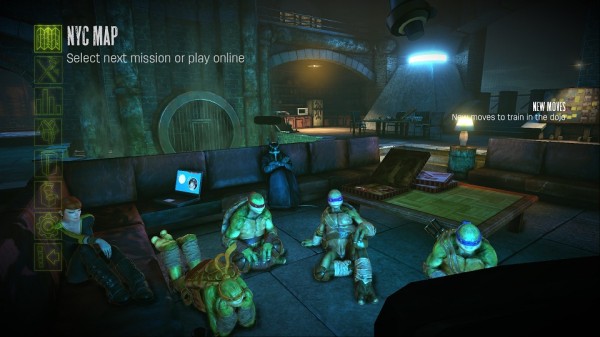
With so much depth and content, you’d wonder how the eighteen-man development team got it all into a neat, playable package, especially since it was only in pre-alpha status back in March of this year. Wonder no more: they didn’t. Playing on PC seems to spare players a few of the true game-breaking bugs (though, I’ve heard the online is almost completely broken or bug-ridden), but there are plenty of others to mar the experience. There are the usual texture pop-in issues of most Unreal Engine games, along with laggy menus, floating objects and the occasional instances of the AI getting caught on scenery. I’ve heard Xbox 360 players complaining of becoming stuck inside scenery, falling through level geometry and freezes. The worst I’ve experienced is having to complete an instance of the hacking mini-game multiple times in order to progress, after the actual prompt had disappeared following the first completion.
Those aware of Activision’s history with licensed titles (most recent example, The Walking Dead: Survival Extinct) probably aren’t too surprised that this had a limited budget and time schedule which hurt the final product. And it’s a real shame because Red Fly’s love of all things ninja turtle shows through in every part. As a long-time fan myself, I can recognise the turtles’ pose on the title screen and even the subtle nods to past incarnations in the banter that occurs as the turtles explore. Given a full budget and schedule, perhaps without a need to adhere to the Nickelodeon interpretation, I’m certain they could produce a worthy action game that would appeal even to those less familiar with the franchise.
Overall, Out of the Shadows is a tricky prospect. Red Fly have undoubtedly bitten off more than they can chew, and as a low budget game, some of its shortcomings could be forgiven, provided the core of it were strong enough. Clearly, the combat is where it shines, but your enjoyment of that will boil down to whether your patience and love of the licence outweigh all its eccentricities and technical flaws. As the past few decades have shown, turtle power may be a renewable energy source but your mileage from it really will vary.
Developer: Red Fly Studios.
Genre: Action, beat ’em up.
Time: 5-6 hours for main campaign. Another hour and a half for arcade mode.
Gripes: Very slow and frustrating in the beginning; minor combat flaws and camera troubles; a ridiculous amount of bugs/glitches.
Get it for the: Varied and deep combat that offers a great deal of replayability, all with a distinctive ninja turtle flavour; the most accurate representation and appreciation the ninja teens have ever received.
Full disclosure: PC version purchased, played with 360 controller, all single-player. As well as replaying the campaign with many more upgrades, for a far better experience, I have spent many additional hours in the training, challenge and arcade modes, learning all the tricks and intricacies of the combat system.
